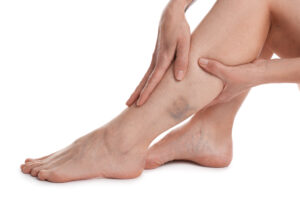Sprain, Strain, or Tear? How to Spot the Differences and Understand Your Injury
Table of Contents
- Muscle Strain vs. Sprain
- How Long Does Muscle Strain Recovery Take?
- Effective Muscle Strain Treatment: Home Remedies and Medical Care
- When to See a Doctor for Muscle Strain
- Muscle Strain vs Torn Muscle: What’s the Difference?
- Preventing Muscle Strains
- About Dr. Alan Nasar
Muscle strains are a common injury that can affect anyone, from athletes to those performing daily activities. Understanding muscle strain treatment options, recognizing symptoms early, and knowing how to recover efficiently are crucial.
Muscle Strain vs. Sprain
A muscle strain happens when muscle fibers are overstretched or torn. This can occur during sudden movements, heavy lifting, or overuse. Knowing the difference between a muscle strain vs sprain is important — strains affect muscles or tendons, while sprains involve ligaments.
- Strains involve muscles or tendons and happen when fibers are overstretched or torn — often from lifting, overuse, or sudden movement.
- Sprains affect ligaments, the bands that connect bones, and usually occur from a twist or fall.
Symptoms may differ:
- Strain: muscle pain, cramping, weakness, swelling.
- Sprain: joint pain, swelling, bruising, possible instability.
“Patients often confuse strains with sprains,” Dr. Nasar notes. “Understanding the difference ensures the right treatment path is chosen.”
Common Muscle Strain Symptoms
- Sharp pain during or after activity
- Swelling and tenderness
- Bruising or discoloration
- Muscle weakness or spasms
- Reduced mobility
Causes of Muscle Strain

Muscle strains often happen due to:
- Improper warm-up before exercise
- Sudden heavy lifting or twisting
- Repetitive movements without rest
- Muscle fatigue or weakness
How Long Does Muscle Strain Recovery Take?
Recovery varies by severity:
- Mild strains (Grade I): 1-3 weeks
- Moderate strains (Grade II): 4-8 weeks
- Severe strains (Grade III): Several months, often requiring medical intervention
According to Dr. Nasar, “Recovery time depends on severity and how promptly patients begin the appropriate treatment regimen.”
Effective Muscle Strain Treatment: Home Remedies and Medical Care
Muscle Strain Treatment at Home
For mild strains, follow the R.I.C.E. method:
- Rest: Avoid activities that aggravate pain.
- Ice: Apply cold packs for 15-20 minutes every 2-3 hours for the first 48-72 hours.
- Compression: Use elastic bandages to reduce swelling.
- Elevation: Keep the injured area raised.
Muscle Strain Ice or Heat?
Use ice initially to control inflammation. After 72 hours, gentle heat may help relax tight muscles and increase blood flow.
When to See a Doctor for Muscle Strain
Seek medical attention if:
- Pain or swelling worsens
- You experience muscle weakness or numbness
- You cannot move the affected muscle
- Symptoms persist beyond a few weeks despite home care
Dr. Alan Nasar and the team at Advanced Orthopedics and Sports Medicine Institute provide evaluations and tailored treatments, including physical therapy and advanced care options.
Muscle Strain vs Torn Muscle: What’s the Difference?

A torn muscle is a more severe form of strain involving partial or complete rupture of muscle fibers. This often causes intense pain, significant bruising, and loss of muscle function. Early diagnosis and treatment are essential for recovery. In some cases surgical procedures may need to be considered to repair more serious muscular tears.
“Recognizing a torn muscle early can mean the difference between a simple recovery and a long-term complication,” warns Dr. Nasar.
Preventing Muscle Strains
Reduce your risk by:
- Always warming up before physical activity
- Incorporating flexibility and strength exercises
- Avoiding sudden increases in activity intensity
- Using proper form and technique
Understanding muscle strain causes, symptoms, and the best muscle strain treatment methods can help you recover faster and safely return to your daily routine. If you suspect a muscle strain or have persistent symptoms, schedule an appointment with Dr. Alan Nasar at Advanced Orthopedics and Sports Medicine Institute for professional care.
“Our goal is to help every patient return to their active lifestyle with minimal downtime and maximum care,” says Dr. Nasar.

About Dr. Alan Nasar
Dr. Alan S. Nasar is a board-certified orthopedic surgeon at Advanced Orthopedics and Sports Medicine Institute with specialized training in minimally invasive joint replacement surgery. With a background in mechanical engineering and advanced training in orthopedic biomechanics, Dr. Nasar approaches every injury, from minor muscle strains to complex joint issues, with a deep understanding of how the body moves.
Dr. Nasar’s unique experience helps patients recover faster and more comfortably. He combines cutting-edge treatments with a personalized approach. Dr. Nasar is a fellow of the American Academy of Orthopedic Surgeons and an active member of the New Jersey orthopedic community.

